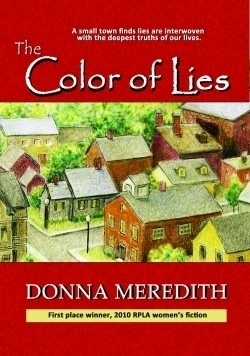
The Color of Lies
Schoolteacher Molly Culpepper has placed her faith in the basic goodness of her Georgia hometown. Widowed at forty with two sons, church, school and family are what keep her grounded and on track. When a colleague writes a racial slur on a classroom chalkboard during Barack Obama’s presidential campaign, her assumptions are shaken up. “I started to look at my town through different lenses, and was shocked to discover the nicks and the smudges. All that dirt.”
Well, what would a novel set in the small-town South be without dirt? The Color of Lies begins with the racial slur and its impact on the school, which is mostly black and not as fully integrated as anyone would like. But Molly’s got an alcoholic dad and a teenage son to wrangle as well, and a neighbor whose interest in their family may be friendly or might signal something more. Everyone seems to be operating with dual agendas, which account for the “lies” in the title, and the novel’s multiple layers of conflict. Donna Meredith, who also wrote The Glass Madonna, keeps all these players straight and allows enough breathing room for plot and characters alike to develop, if only just enough. Setting the book in the very recent past is a big plus; many of the hardships the teachers endure as a result of budget cuts will strike readers as painfully accurate.
While The Color of Lies is a tad overstuffed, Meredith introduces some characters nuanced enough to stand out. The Reverend Bolden spearheads a lawsuit accusing Alderson High of racial bias and plays to the media at every opportunity, but when the cameras are turned off he proves to be willing to listen and compromise. Molly’s coworkers each react differently to events as they unfold, allowing for a well-rounded discussion of both race and education in America today. There’s also a love story, a triathlon, some introductory puppy training, and an abundance of toe-curlingly delicious food, recipes for which appear on the author’s website. The twists come fast and furious, but it all makes sense in the end, and the journey is fun and ultimately hopeful.
Reviewed by
Heather Seggel
Disclosure: This article is not an endorsement, but a review. The publisher of this book provided free copies of the book and paid a small fee to have their book reviewed by a professional reviewer. Foreword Reviews and Clarion Reviews make no guarantee that the publisher will receive a positive review. Foreword Magazine, Inc. is disclosing this in accordance with the Federal Trade Commission’s 16 CFR, Part 255.
